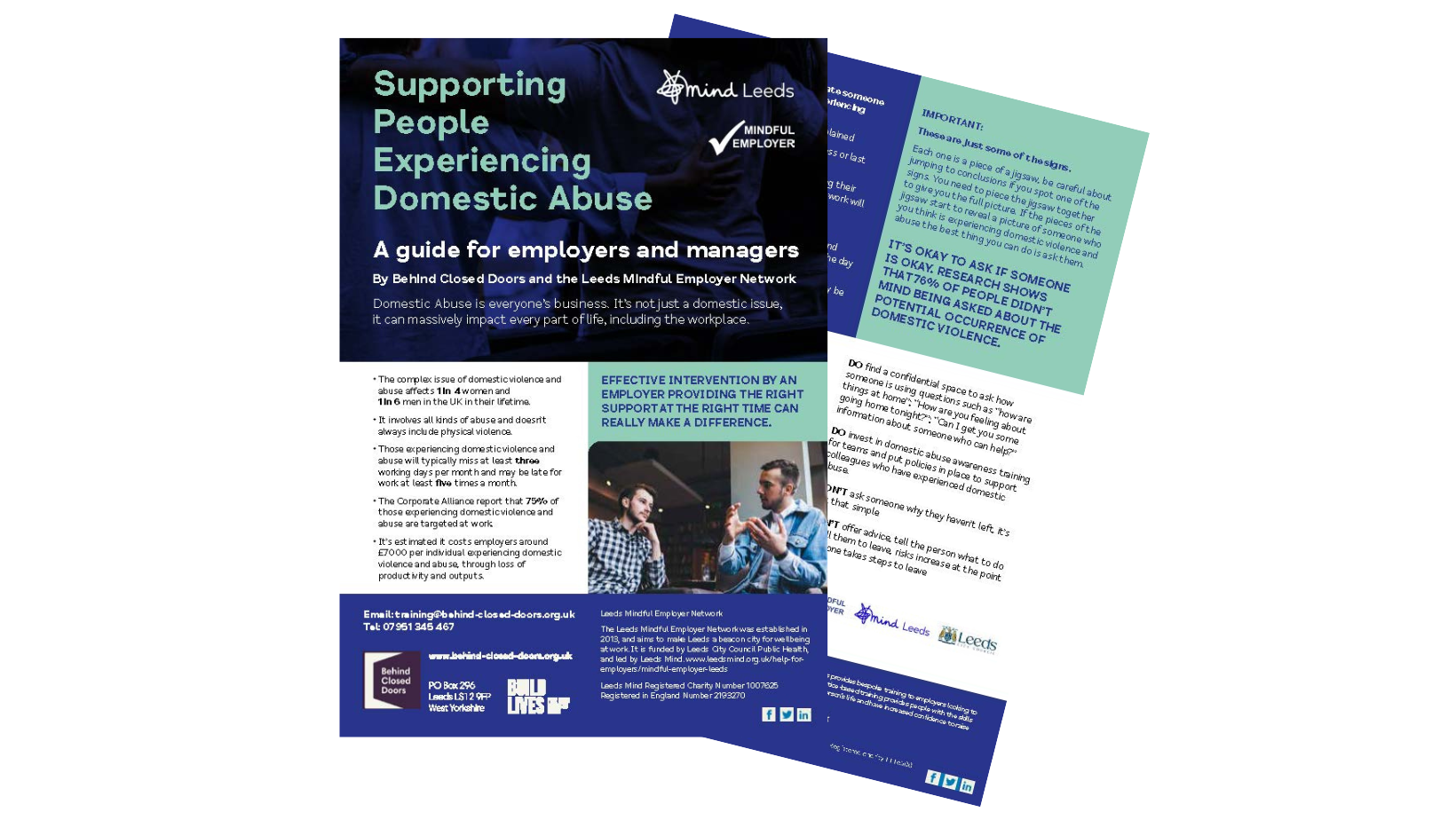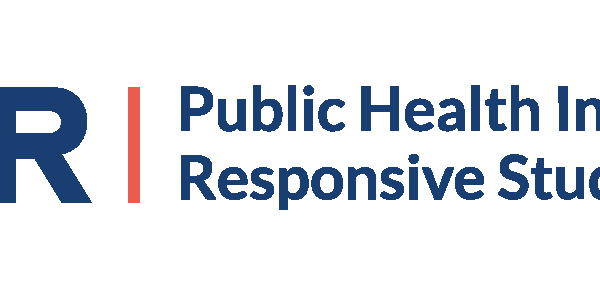Following on from the success of the online event “Effectively Supporting Employees Affected by Domestic Abuse: A Trauma Informed Approach”, Leeds Mindful Employer Network is now launching its newest Employer Resource.
This resource, “Supporting People Experiencing Domestic Abuse: A Guide for Employers and Managers” was produced in partnership with Behind Closed Doors.
Mindful Employer Project Coordinator, Leigh Staunton has been talking to Mell Handley, Behind Closed Doors’ Training and Development Officer, about the ways employers can help employees affected by domestic abuse.
So Mell, what are the signs employers can look out for which could indicate someone may be experiencing domestic abuse?
So, some key red flags that might be noticed in the workplace would be:
- Any changes in usual behaviour
- Changes in motivation or performance
- Someone isolating themselves from colleagues
- Someone being overly anxious about leaving on time
- Someone becoming secretive about their home life
- Someone spending a lot of time at work – not taking annual leave, staying late, coming in even when sick. This could indicate work is their safe place
- Injuries which are inconsistent with the explanation given
- Using makeup or clothing to cover injuries
- Someone receiving excessive personal calls/texts, especially if they seem distressed or anxious when their phone rings
- Partner/family member is seen hanging around the workplace
- Someone has got engaged/moved in together very quickly after meeting a new partner
This is not an extensive list, and it’s important not to jump to conclusions, because there may be other reasons for these signs. See each of these pieces of information a part of a jigsaw puzzle. The more pieces of the puzzle you have, the easier it is to see the true picture. That’s why good communication with staff is so essential.
What different kinds of domestic abuse should employers be aware of?
Domestic abuse doesn’t always involve physical violence. The 2021 Domestic Abuse Act specifically mentions: physical abuse, sexual abuse, economic or financial abuse, psychological and emotional abuse, threatening behaviour, and coercive controlling behaviour.
Some of these are extremely subtle and can be very insidious, so it can be very tricky to spot, especially if you are the person in the abusive relationship.
What are the key things an employer could do to support their workforce?
There are a range of tools employers can use, including:
- Having an effective Domestic Abuse policy
- Ensuring managers are trained in how to deal with staff members who are experiencing abuse
- Displaying gender-inclusive posters and leaflets in public areas, including the new Leeds Mindful Employer Network Resource, “Supporting employees Affected by Domestic Abuse”, which was designed with employers in mind
- Training designated domestic abuse champions who are known to staff members; many mental health first-aiders are taking on this role in organisations and we offer training for this
- Training all staff to be aware of what abuse is and how to recognise the signs among their colleagues
- Not being afraid to broach the subject
Can you give an example of an employer positively supporting someone experiencing domestic abuse?
We have worked with clients whose employers have not been supportive and have made the situation worse for them, for example by instigating disciplinary proceedings around punctuality and absences rather than exploring reasons for it. However, we also know of some great managers who have made an enormous difference by supporting their staff member to continue to work safely and effectively.
Examples of good practice include:
- Agree what will happen if their abuser turns up at (or calls) work
- Allow them to change work pattern or location where possible
- Move the staff member’s desk away from windows where they could be easily seen
- Agree special leave for them to attend appointments with solicitors, courts or their DV&A worker
- Change work phone number and divert emails if necessary
- Check their arrangements for getting to and from work safely
- Provide a safe car parking space, escort to and from the building, improved security measures like lighting and cameras for all
- Ensure the individual doesn’t work alone or in isolated areas of the building
- Ensure you have an up-to-date emergency contact number and arrangements for checking in at agreed times
- Keep accurate records of any abusive incidents that happen on work premises
- Support your employee to make a referral to a domestic abuse organisation if that is what they want
Do the signs vary depending on gender identities?
We do know that domestic abuse can impact people of all genders and sexual orientation. We also know that additional barriers to reporting and accessing support do unfortunately exist for those who are LGBTQIA+.
Anyone could experience any and all of the different types of abuse covered by the legislation. The signs are not necessarily different, but the way they are perceived can vary considerably.
Myths and stereotypes around domestic abuse mean that the same signs which would be recognised as abuse in women are often overlooked when seen in other genders. For example, Mankind research has shown that men tend to fear not being believed even more than women do, so directly asking can be especially important for men.
Finally, why did you want to make this resource leaflet with the Leeds Mindful Employer Network?
Employers are in a unique position to notice potential signs of abuse and therefore to signpost their staff to support. I know that Mindful Employers recognise their responsibilities for the mental health and wellbeing of their workforce and will therefore want to know how they can best provide support. Many managers tell me they don’t have the confidence to broach the subject of domestic abuse or wouldn’t know how to offer appropriate support if they were aware of an employee going through it, so they often avoid the subject altogether and miss a valuable opportunity to get someone the help they need. After attending our workshops and bespoke training, employers report feeling far more confident in knowing how to handle this issue, and if that means that individuals are supported more quickly and potentially then we have achieved our aim of building lives free from domestic abuse.
You can download the leaflet here. A print version can be accessed here.




